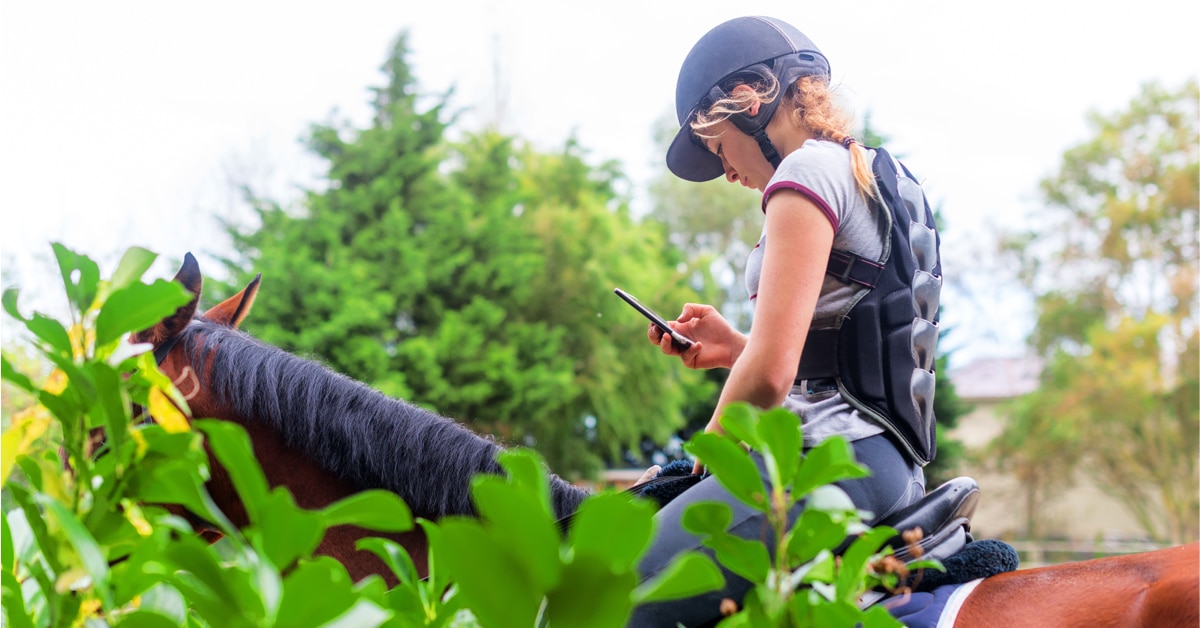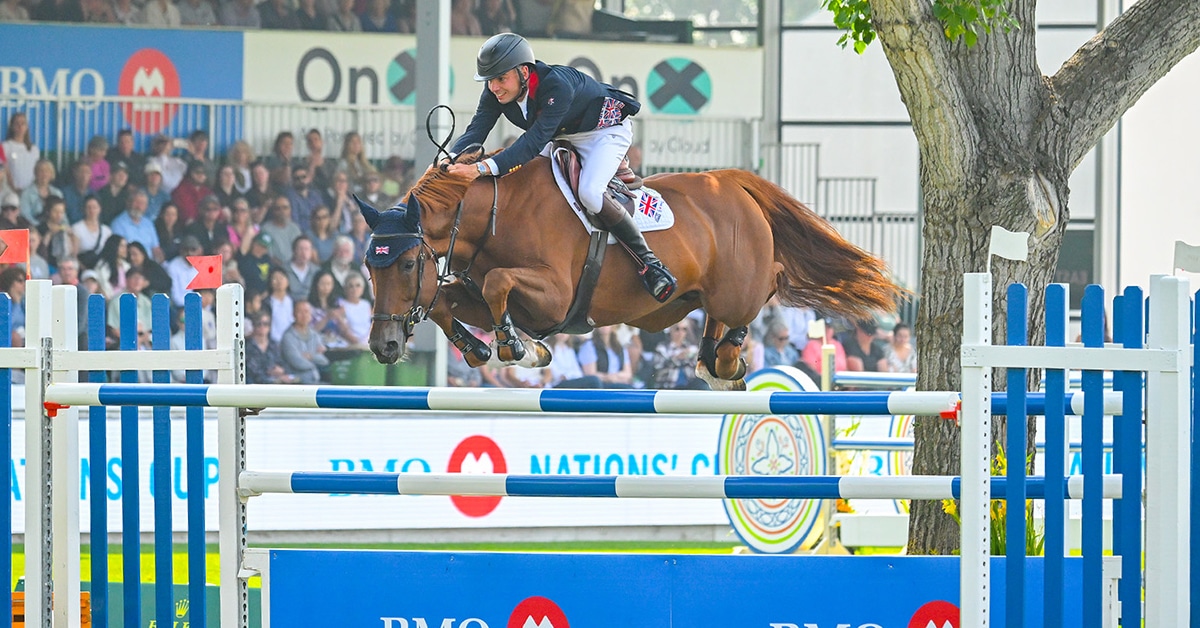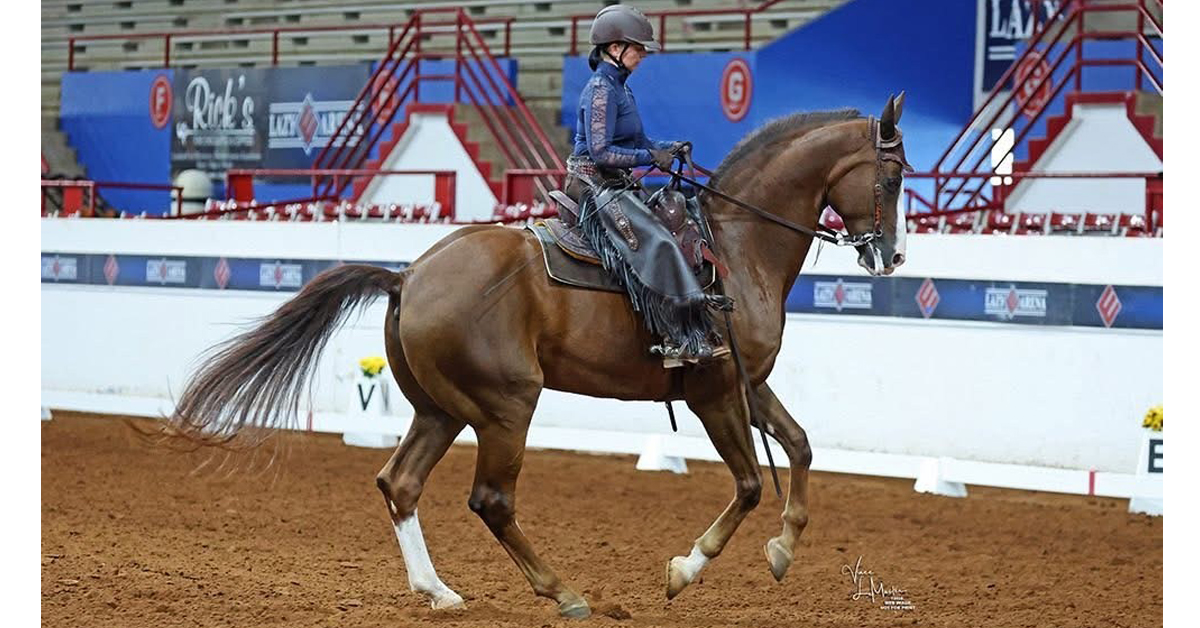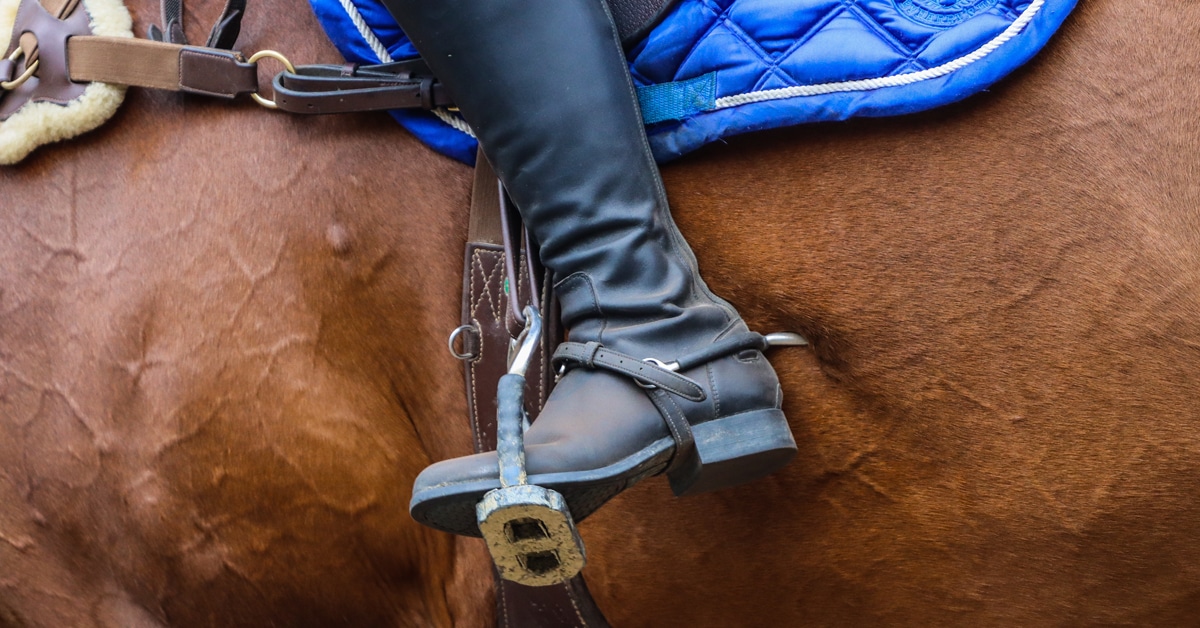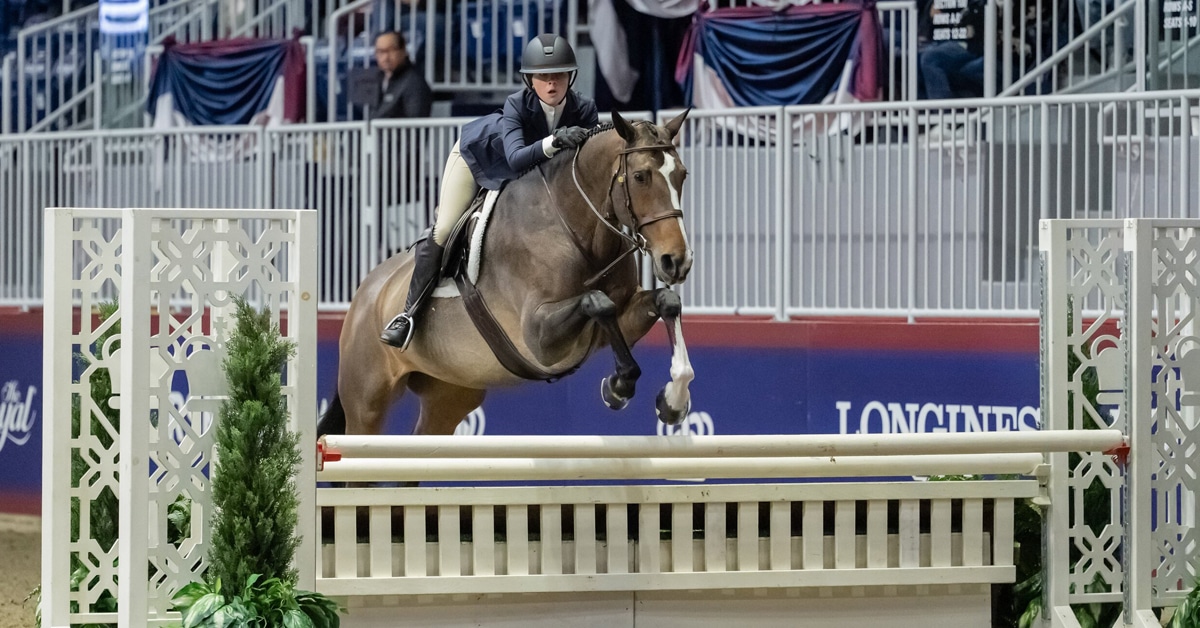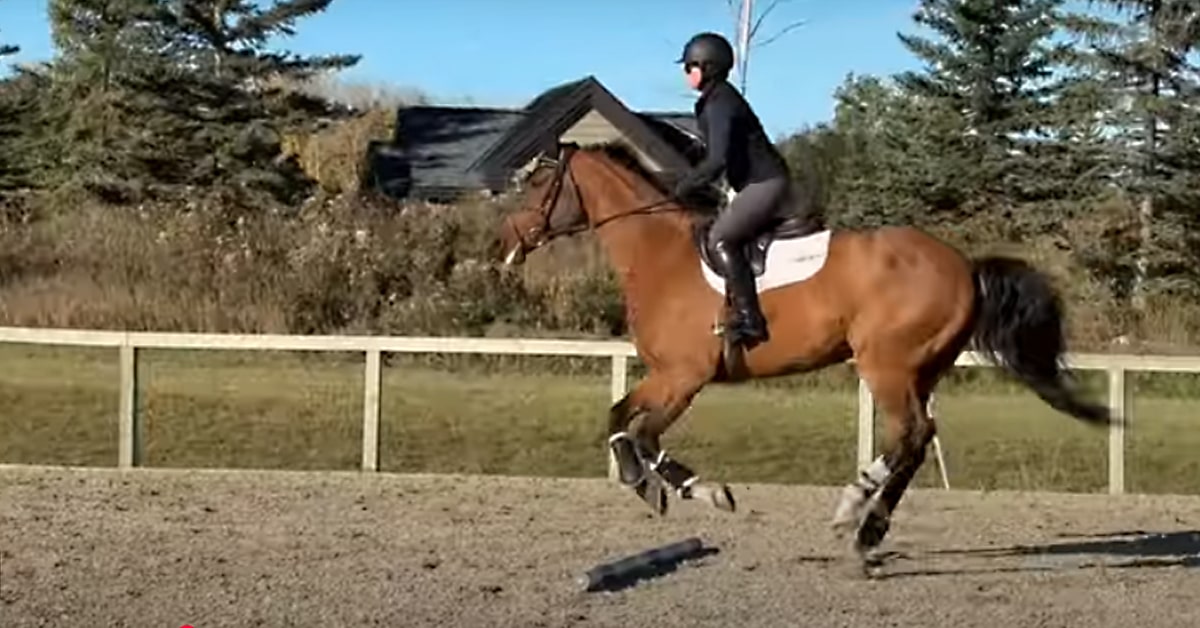Knowing how to prepare your horse’s turnout for the show ring can be difficult when taking into consideration not only common practices for each discipline, but also the Equestrian Canada rules and regulations. Common factors include good grooming, braiding, and well-fitting tack that’s both safe and in good repair. But good turnout also depends on taking your horse’s overall comfort and well-being into consideration — something that can be achieved with any horse competing at any level, even if you don’t have the funds for a costly array of grooming supplies or tack.
If you’re planning on showing this summer (or have been showing and could use a little more edge in the ring), this guide filled with useful tips from FEI jumper and hunter judge and steward Tracy Dopko, and FEI dressage steward and EC senior judge Leslie-Anne Kennedy offers some amazing insights to help get your horse looking and feeling his or her best for the hunter ring or dressage arena.
DRESSAGE
Because dressage is a judged discipline where beauty and harmony are taken into consideration, it’s important to ensure that your horse represents one half of a well-put-together team. More important than anything else, says Leslie-Anne Kennedy, the key to a beautiful partnership lies in your horse’s observable happiness in his or her work.
“Good turnout,” says Kennedy, “concerns the ever-increasing focus on the ‘happy horse,’ rather than colours of jackets, polished boots, neat braids, or immaculately groomed horses. If the horses are not happy, it doesn’t matter how well the rider and horse may be turned out. For me, all the polish in the world pales in comparison to an unhappy horse.”
Tack
Comfortable tack is one of the most essential parts of keeping your horse happy in his work. “A well-turned-out dressage horse, in my opinion, is a horse whose tack complies with the rules,” says Kennedy. Ultimately, this means tack that “fits properly and is well-adjusted, thereby maximizing the comfort of the horse. He should look happy and comfortable in the bridle and saddle.”
To give the best care and consideration to your horse, Kennedy encourages learning to recognize signs of pain with the Ridden Horse Pain Ethogram, a checklist of 24 pain behaviours developed by veterinarian Dr. Sue Dyson to determine the presence of musculoskeletal pain in horses. “If pain is determined,” says Kennedy, “tack could be a culprit.”

An anatomical bridle allows the leathers to be adjusted to best fit your horse’s head movement.
For bridles especially, Kennedy says, comfort and fit should also be your principal concern. “A horse’s face has many nerves. Any sort of restriction caused by bridle fit affecting these nerves can be very painful for the horse. For instance, the cheek pieces and buckles of the bridle should not sit on the temporomandibular joint (TMJ). This joint is a highly innervated synovial joint. Tension caused by poor bridle fit surrounding the TMJ can affect the whole horse through various muscles and myofascial links, impair equilibrium, proprioception, and negatively influence behaviour and result in poor performance.”
According to EC rules, nosebands cannot be overtightened, must not impair the horse’s breathing or cause discomfort, and must fit so that a finger can comfortably fit between the horse’s cheek and the noseband.
“During recent years,” says Kennedy, “Anatomical bridles and more awareness of horse comfort has been trending. I am a huge supporter of anatomical bridles. I have seen more of them in the warm-up ring in recent years, often resulting in happier-looking horses.”
To ensure your bits, bridles, and saddles are eligible for competition, Kennedy says it’s important to be familiar with up-to-date rules. “Do review your rules each year before the start of the competition season. Don’t assume the rules have remained the same, specifically when it comes to tack, and bits in particular. Don’t rely on the salesperson at your favourite tack shop to know the rules. Even though well-intentioned, they can be misinformed. During tack check I have experienced competitors thinking they were in compliance with equipment rules based on information given to them at a tack shop.”
For a complete list of eligible bits and bridles, including diagrams, see the 2024 EC Dressage and Para-Dressage rulebook here.
Grooming and Braiding
Good grooming can showcase your commitment to your horse’s good health and maintenance. Be sure your horse’s coat is clean and free from dust, even if this means bringing a damp rag or a dandy brush in your ringside bag to do a sweep of your horse’s coat before entering the ring. Blotches, grass-stains, and even foam from the bit can create an overall impression of untidiness.
Braiding is encouraged in dressage in order to remove the distraction caused by free-flowing hair. Typically, fewer braids are used than in other disciplines in order to accentuate the musculature as well as the line of the neck. Button braids and running braids have become more popular in recent years because they allow competitors to skip mane-pulling. Using coloured thread or wool to fasten the braids is common, and so are elastic bands. Braids can also be taped, but white tape is less popular than it used to be.
For tutorials on terrific alternatives to conventional hunt braids designed for longer manes, see Mane & Tail Braiding Tutorials.
Tails aren’t typically braided in dressage, but to improve your horse’s topline, any short hairs sprouting around the dock can be trimmed. The tail itself should be brushed through to maintain as much straightness as possible. According to Equestrian Canada rules, any ornamentation in the mane or tail — like ribbons or flowers — is prohibited, with the exception of a red ribbon in the tail for the safety of fellow competitors in the warm-up ring.
False tails are also common and popular in the dressage ring, especially at the upper levels, even with horses who have thick tails to begin with. They give the impression of an undisrupted topline from nose to tail. Tails should match the hair colour of the horse as closely as possible, but cannot be weighted and cannot disrupt your horse’s comfort or the natural movement of the tail.
HUNTER
Grooming
According to Tracy Dopko, whose many qualifications include FEI steward, EC senior hunter and equitation judge, R jumper judge, and senior steward, and USEF R hunter, equitation and hunter breeding judge, a well-groomed horse is the easiest way for a judge to immediately assess if you and your horse are ring-ready.
“Proper turnout and tack is important as it not only ensures you are adhering to the rules for that particular discipline, but it also shows respect for the sport and for the judges.” Because anything less can sometimes create the impression of lacking horsemanship, “The majority of trainers and competitors put in the effort before they walk into the competition ring,” says Dopko. “and this really goes back to the trainers ensuring their riders are well-prepared for competitions.”

Marina Newson competing in Jr/Am and Equitation at Thunderbird with Illassio S, a perfect example of a healthy horse carrying a good weight.
Like Kennedy, Dopko agrees that nothing looks better in the show-ring than a happy, healthy horse whose body reflects his or her fitness for the work they’re being asked to do. Fitness and nutrition are an even bigger part of good turnout as grooming is, and taking time before the show to ensure your horse is competition ready is as important as the final details on show day.
“Make sure your horse is carrying good weight, which may be discipline-dependent,” Dopko says. “In my opinion, a horse that is carrying too much weight can be just as detrimental as a horse that is too thin. A horse coming into the competition ring in good weight gives the impression that the horse is healthy and well cared for, and in the hunter and equitation rings, that first impression can go a long way. As judges, we do notice when a competitor has or hasn’t put in the extra effort.” This includes a spotless coat, so owners of greys or horses with lots of chrome should invest in proven cleaning products.
Braiding
“Take a second and make sure the horse’s tail is free of shavings and debris,” says Dopko. This especially goes for horses whose tails and manes are braided. Braiding is meant to increase the appearance of neatness and enhance your horse’s clean lines, so there’s nothing that sends mixed messages about a competitor’s attention to detail like a beautifully braided mane full of flecks of sawdust or bits of hay. Or worse, a braided tail with clumps of shavings only visible when your horse decides to swat a fly!
Braids in the hunter ring are typically shorter and more plentiful than dressage braids. Check here for tips on how to do the perfect mane braids, and for tails, see The Perfect Tail Braid.
It’s important, says Dopko, to make sure that braids are not only well-presented, but properly maintained throughout the day in all of your classes. “If your horse is braided, ensure that the braids are clean looking and haven’t been rubbed out. I’d rather see a horse come into the ring unbraided than one that comes in with a bad braid job or braids that have been rubbed badly.”
Tack
More important than following the trends for the latest flashy saddle or expensive bridle is to “make sure tack is clean, oiled, and fits well,” says Dopko.
It’s also important for competitors to remember that, while forms of bitless bridles are accepted in the jumper ring, bitless bridles are against the rules for hunter classes. “Bitless bridles are not allowed in the hunter ring and this is stated as a rule in the Equestrian Canada rulebook. Part of judging hunters involves judging way of going and acceptance of the bit. Judging the latter would not be possible with a bitless bridle.”
According to EC rules, first and foremost, all bits must be humane in nature. For more information on acceptable bits and bridles for 2024, see here.
Boots & Wraps
Boots are a staple of jumpers, but “Bandages and boots are not allowed in the hunter ring,” says Dopko, unless in circumstances of inclement weather, and at the discretion of the judge.
“It’s important to remember that hunters go back to the tradition of foxhunting. In hunters, bandages and boots have to do with practicality. If a horse and rider have been foxhunting, it would be extremely difficult to find boots that would survive the conditions — i.e. going through creeks, mud, branches. The course design, distances, and speed in the hunter ring are all fairly controlled and the jumps inviting, which therefore negates the need for bandages and boots.
“Hunters also includes an element of judging the horse’s way of going and style over fences. As a result, an argument can be made that these items would hinder a judge’s ability to judge that criteria properly. That’s why boots and bandages are only allowed in the hunter ring in the case of inclement weather, e.g. rainy day in which the footing is compromised.”

A pet peeve of judges, show numbers must be easily readable from across the ring (Pro4mance, Ace Equestrian photo)
Numbers
Wearing competition numbers is one of the most important and least discussed parts of good horse turnout. “Proper turnout for a competition horse at EC and FEI competitions is horse that is wearing their competition number any time they leave the stabling area, even just for grazing. This is also listed in the rulebook. While this has been a long-time rule at EC and FEI competitions, this is a brand new rule for United States Equestrian Federation (USEF) competitions this year.”
One of Dopko’s biggest pet peeves is bridle numbers. Always be sure your bridle numbers are worn clearly and visibly, as riding without them can lead to disqualification. “Bridle numbers have become a hot topic for horse show officials. They can be the bane of our existence, as some are too small to read from across the ring, others are unflattering on the horse’s head, the individual numbers don’t stay in place, etc. These issues need to be considered when you are looking at purchasing a set.”
Review the rules
“A steward’s [and judge’s] goal is to help, prevent, and intervene,” Kennedy notes. “Our purpose is not only to ensure all rules are adhered to, fair play for all, principles of good horsemanship and best possible competition conditions, but the welfare of the horse must be upheld, as per EC and FEI regulations.”
If you’re confused about the rules, always remember to speak with show officials. “Ask a steward for clarification on equipment before you enter the ring if you are not sure,” Kennedy says. “Stewards are more than happy to help you.”
The complete and up-to-date rulebooks for EC competitions in every discipline can be accessed online here.
The Latest
